Uncrewed platform development funding
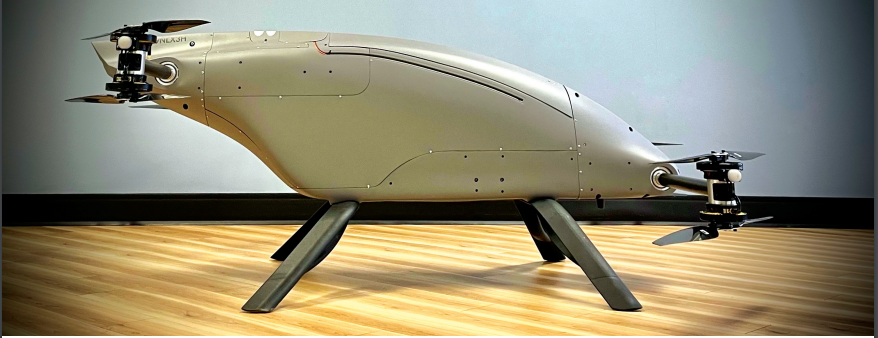
Life-saving ideas
As the world becomes a more dangerous place, so uncrewed systems are making waves, and anyone with a great concept could be riding the next one, as Rory Jackson finds out
Whether from climate change, military conflict or changing work environments, new ideas abound for uncrewed systems suited to tackling the problems of today. From university students’ computers to established firms’ r&d labs, advances in AI, propulsion, electromechanics, sensors and more are enabling scalable, manufacturable autonomous vehicles that stand to make people’s lives safer and easier.
As the cynics will (correctly) say, however, an idea is of little value if there exists no means of taking it past the prototype stage and into manufacturing.
Fortunately, the uncrewed world is blessed with numerous development funding approaches, both governmental and private in origin, for providing financial, consultative and other developmental support to ideas deemed worthy of travelling the path to production and proliferation in the real world.
Some are well known throughout the industry, such as the Genius NY competition, which gives out $3 m (£2.40 m) every year to UAVs and solutions in automation and advanced air mobility (last year choosing Blueflite’s Slate and Cobalt UAVs, featured in Issue 54, as their grand prize winners).
Others, competitions and organisations alike, bear watching for anyone seeking a development partner and funding for what could be a game-changing uncrewed system or technology of the future.
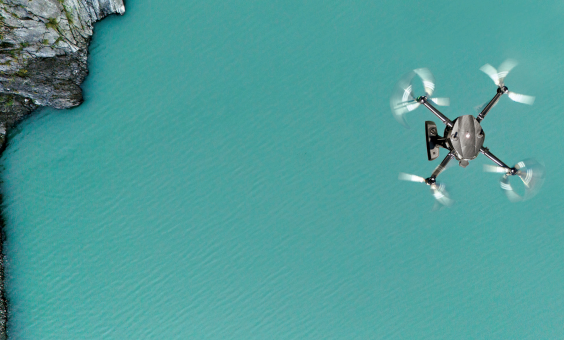
Emergency response
The nature of emergency response operations such as search-and-rescue often requires that victims be rescued or aided in remote and dangerous locations, such as mountainous regions, disaster-affected areas or the sea. It follows that saving their lives depends on reaching them as rapidly as possible.
Crewed aircraft and the response teams around them will naturally need to be put through more preparation, safety checks and training than is needed for operations by their uncrewed equivalents. Furthermore, heading into hazardous places puts rescue teams at great risk, so if a loss is unavoidable, it’s preferable to lose a UAV than a human being.
These potential benefits and more have driven the coalescence of the GoAERO organisation and its Emergency Response Flyer (ERF) competition, in which over $2.5 m of funding is available, as is a vast wealth of technical and consultative resources that participants can leverage in developing their solutions for uncrewed emergency response.
“On top of increasing climate-related disasters like floods and wildfires, here in the US around five million people live in ‘ambulance deserts’, where it takes more than 20 minutes for an ambulance to reach them, even if there is no traffic or weather slowing it down,” says Gwen Lighter, CEO of GoAERO.
“That’s not unique to the US either, so we’re encouraging through our funding, mentors and global partner network the development of all-new uncrewed aircraft that can save lives on a daily basis, whether in sudden crises or everyday medical emergencies.”
While helicopters are highly functional for bringing crews and supplies to affected areas, and for airlifting victims, drawbacks such as their expense, dependance on a pilot, and the difficulty of manoeuvring them in and out of tight spaces is driving many of the aerospace and humanitarian organisations among GoAERO’s partner network to turn to UAVs.
GoAERO also sees numerous enabling technologies such as advancements in clean electric powertrains, additive printing of custom tools and prototype structures, and AI-powered software and hardware for intelligent autonomy and sense-and-avoid as key factors pushing UAVs as rapid, smart emergency response tools over conventional vehicles.
The technical rules of the competition are hence tailored according to the needs of emergency response workers. These include submissions being designed as single-occupant UAVs, with the ‘occupant’ being a 57 kg mannequin to enable actual rescue – the biggest hurdle in emergency response, because if a UAV can rescue a victim, then its ability to find them and bring them life-saving supplies should be unquestionable.
The UAV must also function with a high level of autonomy, which lowers barriers to their usage, such as the skills, training or workload needed to operate them. Autonomy will also be critical in each UAV’s ability to pass the practical stages of the competition.
Three stages are planned: first is a Paper stage, in which teams submit a digital design for their rescue UAV. The Prototype stage follows, and runs until September 2025, with both full-scale prototypes and sub-scale versions acceptable.
“Stage three is the final Fly-Off, where teams from around the world will gather and fly three different missions, titled Productivity, Adversity and Manoeuvrability, from June 5 to December 15 in 2026,” Lighter notes.
Passing the Productivity phase requires moving at least 567 kg worth of mannequins, rebar and/or sandbags within a 90-minute span, with this stage testing the speed and effectiveness with which each team’s UAV can be deployed and recovered. No more than four people must be necessary for operating it, and the total system weight (including tools and infrastructure external to the UAV) is accounted for in the scoring and ranking.
The Adversity stage tests each UAV’s ability to take off and land while carrying its test mannequin in extreme environments, including dust storms, tornados and flood conditions, with the accuracy of the simulated environments judged and approved by partner organisations who know such conditions well.
Lastly, the Manoeuvrability phase tests how well UAVs avoid obstacles such as vertical pylons and walls while flying a mannequin, potentially amid devices that disrupt their comms and GNSS. Both this and the Adversity stage will be ranked according to the fastest times set.
“Notably, teams do not need to win a previous stage to move onto the next,” Lighter says. “In engineering, as in life, you can suffer failure after failure before achieving incredible success. If a design or prototype isn’t fantastic that doesn’t mean they won’t have the best flyer come the Fly-Off in 2026, so teams can keep moving forwards, and we actively help them, particularly through our partner network and Mentor programme.”
As of writing, 174 teams were listed at herox.com/goaero, with stage one submissions closing on December 11, 2024. The competition was open to designs from everywhere on Earth, and from startups, individuals at universities or established companies.
GoAERO and its networks welcomed an abundance of potentially optimal solutions for all the different emergency response use-cases that exist.
“In addition to the over $2.5 m in funding prizes, teams will keep their own IP, because we want everyone to be able to build and sell their aircraft to save lives afterwards,” Lighter says.
“Whether in designing, prototyping or optimising their flight operation concepts, teams can also get one-on-one advice from our dozens of great mentors across aerospace and first response.
“Those include Dan Ateya, managing director at RTX Ventures, who has previously worked at the US Naval Research Laboratory, and co-authored numerous articles on sensors and advanced materials in peer-reviewed journals, or Ramy Mourad, Boeing’s director of engineering for urban air mobility, who has provided an expert lecture on how to expertly build a safe aircraft in a very short length of time, or guys like Tom Judge and John Everlove, who have decades of service, leadership and awards in emergency response work.”
GoAERO is presently supported by several dozen aerospace and emergency response organisations, including Boeing, Honeywell, NASA, the Air Medical Operators Association, SAE International, and the International Association of Emergency Managers.
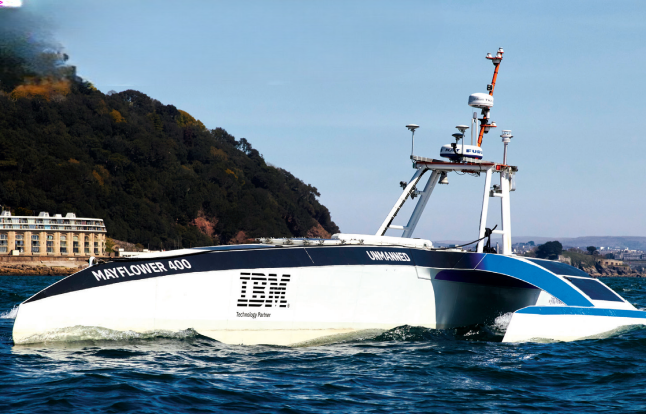
Artificial general intelligence
Meanwhile, Dr. Ben Goertzel, CEO of the Artificial Superintelligence Alliance and founder of SingularityNET, a decentralised AGI (artificial general intelligence aimed at mimicking human cognition) platform firm, is offering more than $1 m in funding grants at https://deepfunding.ai/all-rfps/ to developers with ideas for advancing the use of AI for the benefit of humans.
Such ideas worthy of application include those from AI developers whose innovations stand to make uncrewed systems safer, smarter or more sustainable for humankind, and also those from uncrewed system developers using autonomy in beneficial operations.
“As one example of the former, a partner of ours, PureCipher, is currently patenting a method for AI-powered, noise-based computations that can be used to control an uncrewed vehicle,” says Matt Ikle, chief science officer at SingularityNET, who oversees some of the funding proposals.
“That puts a whole new layer of security on top of typical uncrewed operations by further encrypting a drone or robotic vehicle’s control network and any sensitive onboard information from security threats or unauthorised access.
“On the latter front, I’ve worked extensively with Arizona State University on proof-of-concepts for scalably monitoring carbon sequestration in agriculture, and UAVs could definitely be used there as a survey platform, carrying sensors for measuring biological and chemical indicators in that type of climate science work.”
Ikle and SingularityNET work with universities and other organisations through which many innovations for humanitarian or sustainable uncrewed systems have been presented, often originating from non-vehicular use-cases.
Much of PureCipher’s prior r&d, for instance, has focused on homomorphic encryption for protecting sensitive data environments, such as in finance or health industries. From SingularityNET’s perspective, such encryption could also protect bodies of training data for self-driving vehicles or maritime search-and-rescue UAVs from being hacked, corrupted or contaminated.
“We’re open to all kinds of ideas, originating from any country or industry. For instance, I live in a very remote location, surrounded by 4000 m peaks, and I’m an avid skier. I’ve recently spoken with students interested in engineering UAVs for flying and functioning well at such altitudes, where aerodynamics and certain electronic instruments often become less able,” Ikle says.
“Those could survey for water content in snowpacks and other topological qualities, as well as helping to find avalanche victims or measuring for predictive indicators of avalanches to come.”
Ikle and his colleagues also work with probabilistic logic networks, which are used as uncertain reasoning systems. Jointly with Arizona State University, they proposed using a smart traffic analytics system, co-developed by SingularityNET and Cisco Systems, to help prevent accidents caused by the high rate of jaywalking in Phoenix, US.
“We made that by taking processed image data from cameras and applying reasoning to those data for re-identification. If, say, somebody disappears underneath a canopy of tree cover, and then comes out the other side, we could successfully re-identify the person coming out the other side,” he says.
“We can also model anomalous behaviour with accurate probabilities by gauging, for instance, the likelihood of there being an oncoming car where a person is moving.
“You can quickly see that those sorts of AI technologies could greatly benefit autonomous road vehicles too, as they could plan speed and directional changes probabilistically to optimise their safety and efficiency.
“If someone came to us with a smart system for UAVs to gather relevant aerial image data, we could learn far more, and make our planning and reasoning more precise.”
Ikle adds that applicants with approaches for almost any of the AI-centric ideas previously seen in this publication would be welcomed for consideration. Those include analytics of engine health data for predictive maintenance, AI-enhanced encoding and decoding for improved data compression and streaming, or AI-based logic for autonomous swarm operations.
Applicants from any country around the world are welcome, and SingularityNET itself has personnel and partners on every continent (except Antarctica).
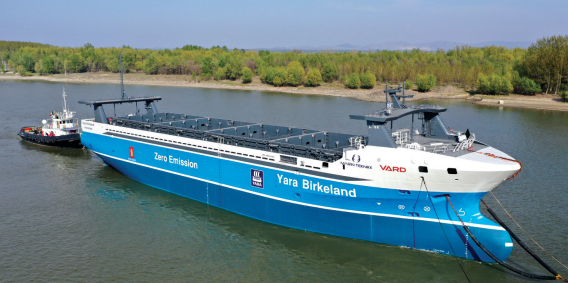
Maritime decarbonisation
Across the Atlantic from the US, a recent call for proposals from the European Space Agency (ESA) is similarly aimed at improving humanity’s lot through the use of autonomy, specifically in the maritime domain.
Since October 31, 2024, and set to close on January 15, 2025, ESA has been offering zero-equity funding (along with technical and commercial guidance, and access to its network and partners) to commercially viable ideas on how the maritime space can be decarbonised through maritime autonomous systems.
That encompasses a broad umbrella. As ESA understands that making vessels autonomous does nothing to directly decarbonise them, examples for technical proposals start with the fact that USVs can be inherently greener than crewed ships by virtue of their relative compactness: remove anything onboard relating to life support, and suddenly it has far less weight and volume to shift.
By extension, it can use a smaller, potentially greener powertrain and does not need to return to port to periodically relieve onboard crew members, potentially enabling more efficient mission routes.
ESA notes that the International Maritime Organisation’s Maritime Safety Committee identifies four degrees or levels of maritime automation (as part of a ‘regulatory scoping exercise’) outwardly analogous to the SAE’s five levels of driving autonomy (published in MSC 100/20/Add.1, Annex 2).
Being a space-focused organisation, ESA suggests innovators could efficiently advance ships’ capabilities from degree one (a ship with automated processes and decision support) to degree four (a fully autonomous ship, through the use of space data and technologies, such as satellite-based positioning, timing, comms or Earth observation) in the interest of maritime decarbonisation.
Enhancing autonomous maritime-traffic management or collision avoidance systems would aid fuel efficiency and the longevity of components, so proposals along such lines would be highly eligible for funding consideration.
AI-based analytics to further aid navigation efficiency against severe weather patterns and other hazards are similarly sought after.
Also included among the ideas for appealing proposals are ways to modernise onshore infrastructure for seamless coordination between offshore autonomous assets and shore-side crews. These include concepts or technologies for remote monitoring and operations centres, docking facilities and comms systems.
For uncrewed assets out at sea, innovations for securing them against jamming, hacking and physical assaults are also prized by ESA within the terms of its call, these being critical to the robustness of autonomous operations, and how they could be made stable and sustainable.
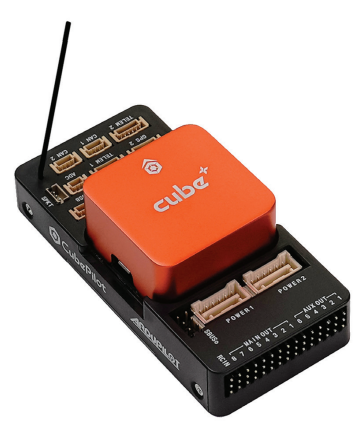
Defensive measures
Naturally, security is a broad subject when it comes to uncrewed systems, but one that defence procurement groups take great interest in.
The NATO Innovation Fund (NIF) is looking to deploy over €1 bn in funding for innovations across nine technical streams that stand to advance the defence, security and resilience of NATO allied nations. Those streams are classified as autonomy, AI, quantum computing, energy, novel materials and manufacturing, next-gen comms, hypersonic systems, biotechnology and space.
NATO founded the NIF as part of its NATO 2030 initiative, intended to boost the impact of startups for nations and businesses across the transatlantic alliance. The organisation has backers in 24 NATO countries, and partners with a portfolio of supporting companies, including military UGV developer ARX Robotics, semiconductor company Space Forge, quantum sensor company Aquark Technologies and composites manufacturer iCOMAT.
As well as bringing ideas like those above, applicants should be either startups or funds, and preferably those after seed-funding through to Series B funding. Geographically, applications must be headquartered in one of the group’s 24 partner nations, all currently located in Europe.
NATO, meanwhile, more directly supports tech startups through its accelerator, DIANA (Defence Innovation Accelerator for the North Atlantic), which, as of writing, encompasses 23 accelerator sites and 182 test centres in Europe and North America. Funding and technical mentoring and expertise are among the tools that DIANA provides to 44 companies (as of 2024).
These include: REVOBEAM in Poland, which develops cost-effective intelligent antennas that are ideal for uncrewed vehicles operating in harsh environments; GIM Robotics in Finland, which makes a variety of solutions for autonomous perception and navigation (indoors and outdoors); UUV component companies such as Elwave, dotOcean and Water Linked, which our readers may already know; and US-based UAV manufacturer Zepher Flight Labs (featured in Issue 36).
While DIANA supports any country in a NATO allied nation, other country-specific platforms exist for more targeted funding of innovations.
In the UK, the Defence and Security Accelerator (DASA) in December 2024 concluded the submissions round for a competition titled ‘Innovation in Support of Operations’, which offers £2 m of funding (excluding VAT) and encompasses four challenges for applicants to tackle.
One challenge asks applicants to come up with ways to make legacy ground vehicles operate with basic levels of autonomy, preferably including the capacity to function in GNSS-degraded and -denied environments, as well as comms-denied or degraded environments.
Also within the terms of that challenge was DASA’s interest in new navigation solutions for UAVs, particularly ones that could operate in GNSS-denied and -degraded spaces. Facilitating the capacity for UAVs to track their position to a minimum accuracy of 50 m (and 5 m objective accuracy) without any manual input is a key requirement.
Additional preferences within the technical specs for proposed navigation solutions included a maximum weight of 1 kg and the ability to interface with industry-standard architecture (with the Cube Orange given as an example). Proposed systems are set to be judged against the costs and capabilities of presently available solutions, and tested over land, or a combination of land and water.
While new UAV platforms are not inherently what DASA is after, applicants were requested to provide their own demonstration UAVs for the testing and evaluation phases, with aircraft weighing below 25 kg being ideal (the navigation solution is likely to be used on a future fixed-wing, 25 kg UAV with a 4 m wingspan).
The other three challenges included, low-cost and low-signature technologies for wide-area sensing and 3D counter-battery radar, including air search, solutions for minefield breaching, and ways for scaling-up complex manufacturing for military materiel and related components, including one-way UAVs and the electric motors used in their propulsion.
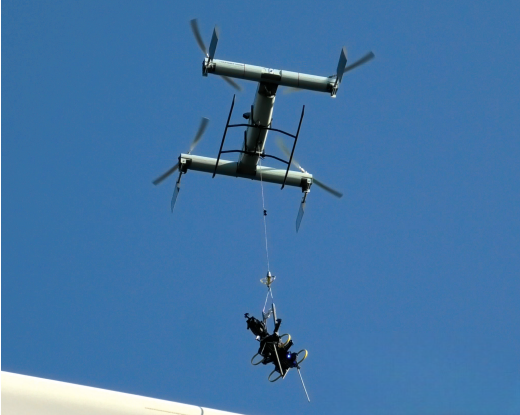
Military logistics
Logistics remains a perennial target market for autonomous systems in the military domain. To that end, funding tenders abound in many places for uncrewed logistics vehicles and solutions. In the EU, the European Defence Agency is offering €2.9 m across seven contracts, each lasting up to three years and revolving around autonomous systems for cross-domain logistics.
The first three contracts specify proposals for UAVs. The first, smallest vehicle for proposals requires concepts for low-cost, attritable drones that can work collaboratively (the applicant contractor being required to provide at least three complete UASs, including external equipment) to support distributed, logistical supply CONOPS for mass delivery of small payloads under 10 kg.
The second contract requires two complete UASs with VTOL capability, able to lift payloads of up to 50 kg each, but still reasonably transportable by ground vehicles or dismounted personnel, to encourage a flexible, mobile logistics UAV design. The third is for a reasonably flexible UAV, capable of moving payloads of at least 50 kg.
All three UAV contracts include VTOL transitioning as an acceptable feature of the proposals, as well as ICE, hybrid and fully-electric powertrains being acceptable.
Contracts four, five and six follow a similar curve of scale, but for UGVs rather than UAVs. Respectively, they focus on low-cost, attritable UGVs with a payload capacity up to 100 kg, medium-size, wheeled UGVs able to move 100-1000 kg payloads, and medium-size, tracked UGVs for the same payload capacity as in contract five.
Notably, all proposed UGV solutions are expected to function without any additional ground-support equipment, and simulate casualty evacuation as well as mass distribution of supplies.
The seventh contract does not focus explicitly on hardware or software, but calls for overarching practical concepts for the planning and execution of military operational experimental campaigns, naturally focused on cross-domain logistics work with UAVs and UGVs.
Back across the Atlantic, the Tactical Technology Office for the US’s Defense Advanced Research Projects Agency (DARPA) has issued a request-for-information (RFI) on heavy-lift UASs that are capable of picking up a 70,000 lb (31751.5 kg) payload – such as 40 ft ISO containers or Bradley fighting vehicles – using COTS engines and drivetrain systems.
As a frame of reference for ideal proposals, the RFI (DARPA-SN-24-109) points to the Sikorsky CH-53K King Stallion as the highest payload-capacity US helicopter, able to lift 36,000 lb on behalf of the US Marine Corps, where it serves as the primary heavy-lift helicopter.
Key challenges include solving ‘ship to shore’ and ‘wide gap-crossing’ problems for armed forces moving troops, vehicles and supplies from vessels to beachheads, and then across obstacles that are both naturally occurring and human-built.
UAVs are viewed as the ideal method for bypassing issues of terrain, mines and waves at ground level with speed and efficacy, not to mention enduring poor weather, avoiding enemy defences, and taking the most direct route possible to areas where supplies, equipment and large platforms must be delivered.
As indicated, DARPA hopes for UAVs with as many COTS components as possible (including not only engines and generators, but batteries and rotors). Such UAVs will be expected to fly from a prepared base to a payload location where they will obtain the 70,000 lb payload, and carry it 25 miles (40 km) at a 500 ft altitude, before detaching it and returning to base over a further 25 miles.
Additionally, the concept description should support a cost of less than $30 m for the first unit of the UAV, and scalability that enables a range of up to 100 miles (161 km). Ideal optional information within proposals includes calculations for lift, CoG, blade and disk loading, power requirements, structural integrity, vibration and aeroelasticity.
Summary
Although a broad selection of funding competitions, calls for proposals and requests for information have been discussed here, it is paramount for any developers seeking finance to routinely scour organisations’ listings for such calls as deadlines for submissions can come quickly.
As well as established platform-development sponsors, such as DARPA, Horizon Europe, Genius NY and so on, innovators would do well to remember that new funds and sources of support spring up all the time, with much of the world understanding that technology exists to make life easier and people happier.
With the near future guaranteed to outsource more dirty and dangerous work to uncrewed systems, and later decades potentially home to quantum computing-powered intelligence, uncrewed armies safeguarding borders, and swarms of rescue-and-relief robots saving lives, all that remains is for people with good ideas to be introduced to those with good capital, with the benefits to be shared by everyone.
UPCOMING EVENTS























